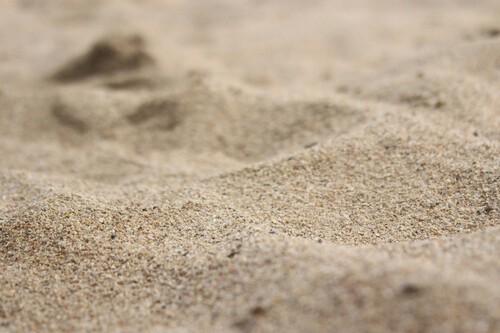In a village in Southern Finland, a giant silo filled with pulverized rock holds an unexpected promise: clean, affordable, stored heat for months. The world’s largest sand battery has been put into operation. What began as an idea between two friends in 2018 has evolved into a pioneering facility that plans to tackle one of the biggest challenges of renewable energy: large-scale storage.
A sand battery. Renewable energy storage is essential in Finland, where the sun doesn’t always shine and the wind doesn’t consistently blow. Polar Night Energy’s thermal battery is located next to the Pornainen district heating plant. Officially commissioned on June 11, it’s managed by Finnish district heating company Loviisan Lämpö. The sand battery boasts a thermal storage capacity of 100 MWh and an efficiency of approximately 85-90%.
Ten times larger. The cylindrical structure stands 43 feet high and measures 49 feet wide. Additionally, it holds around 2,000 metric tons of crushed steatite, a byproduct of Finnish fireplace manufacturing.
This pulverized rock, stored in an insulated silo, serves as a massive thermal energy accumulator. The sand is capable of supplying a week’s worth of heating in winter or a month’s worth in summer, according to TechCrunch.
How can a battery be made of sand? Although the concept may sound complex, the principle is quite simple. Electricity, preferably generated from solar or wind power, is used to resistively heat the air that transfers the heat to sand stored in a silo. Due to its high density and heat capacity, the sand can retain heat for days or even months at temperatures of up to 932 degrees Fahrenheit. When needed, the system releases the hot air to heat water for the district heating network.
In Pornainen, the system supplies thermal energy to public buildings, homes, and even the local swimming pool, according to Euronews. An advanced heat transfer model manages all control and energy performance predictions, calculating the optimal load and discharge in real time.
Reduce the use of wood chips. The new structure aims to reduce the use of wood chips in district heating by 60% and eliminate up to 160 tons of carbon dioxide emissions per year. Notably, construction sand isn’t being used. Instead, the plant uses recycled soapstone, a local byproduct.
Polar Night Energy co-founder Markku Ylönen told EuroNews that while the material must meet specific thermodynamic criteria, it doesn’t necessarily need to be sand. Any high-density granular substance can be enough. This approach not only promotes circular economy models but also alleviates pressure on river ecosystems.
Electricity market. The battery serves as part of the energy reserve service. The company is also working on a pilot project to convert stored heat into electricity, which could enhance the system’s energy flexibility. Additionally, it’s estimated to have much lower storage costs compared to lithium batteries, according to TechCrunch.
A new paradigm shift. In the face of the climate crisis, the future of energy might not rely solely on lithium, hydrogen, and large solar farms, but also on overlooked materials such as sand. From the heart of Finland, a silent battery is already heating homes, libraries, and schools.
Image | Utsman Media




View 0 comments